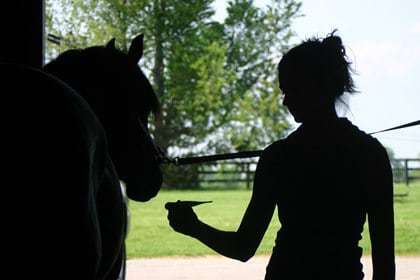Two More Orange County Horses Test Positive for EHV-1

The California Department of Food and Agriculture (CDFA) reported that two additional horses in residing at the Orange County facility quarantined for equine herpesvirus-1 (EHV-1) tested positive for the disease last week.
“A mare displayed a fever the morning of April 17 and a horse which was febrile for one day on Sunday, April 8,” have tested positive, the CDFA said on its website. “Both horses have been placed in separate quarantine isolation stabling on the property. All exposed horses under quarantine continue to be monitored and have temperatures taken twice daily.”
The index case—a 17-year-old Thoroughbred gelding that was diagnosed with equine herpesvirus myeloencephalopathy (EHM, the neurologic form of EHV-1) after developing neurologic signs of disease—remains quarantined and isolated offsite and continues to show clinical improvements, the CDFA said
Create a free account with TheHorse.com to view this content.
TheHorse.com is home to thousands of free articles about horse health care. In order to access some of our exclusive free content, you must be signed into TheHorse.com.
Start your free account today!
Already have an account?
and continue reading.

Written by:
Erica Larson
Related Articles
Stay on top of the most recent Horse Health news with











